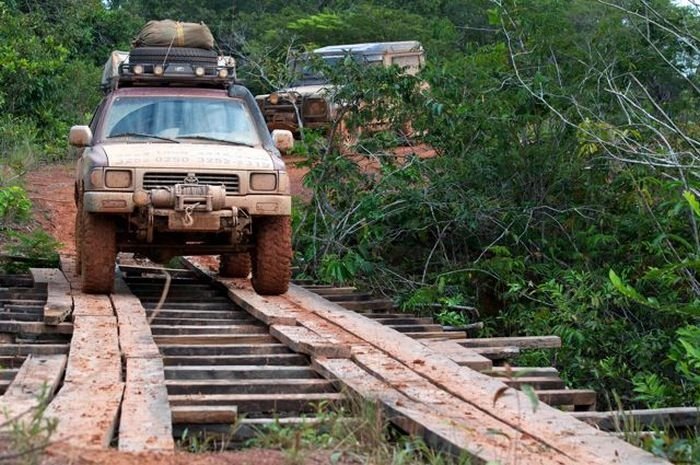|
|
Trans-Amazonian Highway
|
In particular, because of high construction costs and Brazil financial crisis in the late 1970s, only a part of the highway was paved, from its beginning to 200 km ahead of Marabá. The lack of a fully sealed road causes many problems. Travel on the non-paved stretches of the highway is extremely difficult during the region's rainy season between October and March. In the wet season cars often get stuck in the poorly constructed road and in the dry season there are often pot holes in the dry mud roads that damage vehicles.
Construction of the highway was very challenging because of the remoteness of the site. Workers building the road were frequently isolated and without communication, occasional visits to nearby cities providing the only contact. However, severe techniques and procedures that evolved during the construction of Belém-Brasília Highway (BR-153) were then used. According to DNIT, roughly 800 km of the highway is due to be paved in the next 4 years, improving transport links in the central region of Pará state. The Brazilian Government are now planning to tar-mac the whole highway which could destroy many trees along the side of it. As of December 2009, paving was underway between the town of Ruropolis and Itaituba and north to Santarém. This will connect soy plantations with overland trucking routes to the south of Brazil. The road has been left untouched however at points further west of Itaituba, at times narrowing to roughly 2 meters wide.
|
|









